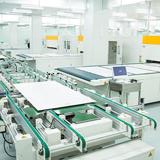

Stretching is the first step of screen printing, that is, the process of tightening the screen on the screen frame. In large-scale production, factories generally choose lightweight aluminum frames that are not easy to deform during long-term use, have good stability and durability, and are easy to use as the preferred screen frames.
Compared to the past, although there are still a lot of manual operations by themselves, compared with the past, many manufacturers are slowly replacing those manual equipment. Gradually upgrade to semi-automatic or fully automatic equipment for silk screen printing. This is because now the industry has slowly developed, so the equipment has to keep up.
When choosing its size, pay attention to choosing a larger image and text than the printing plate you need, at least ten to twenty centimeters on each side. At the beginning and end of the squeegee movement, at least ten to fifteen centimeters more than the graphic text of the printing plate can be used for normal printing.
Nowadays, many screen-printed products are exported. In order to meet the needs of export, factories often choose a yellow polyester screen imported from Germany or Japan. For particularly demanding printed products, they are often used The imported yellow silk screen of 350T can better show the color of the pattern.
As the industry is developing fast, they are pursuing higher quality products. Therefore, the equipment is becoming more and more technological, and they will use some high-tech equipment to replace the all-manual simple equipment of the past. The purpose is to keep up with the competition in the industry and not be squeezed.
When it comes to the post-printing and exposure steps, the light source usually selected is ultraviolet light. Because blue-violet is a mixed reflection of cyan and magenta, it also shows that it lacks yellow hue.
Tel:15158365810
HTML:www.mysyqc.com
Add:No.185, bridge 3 road, xiaoqiaotou village, qiaotou town, cixi city